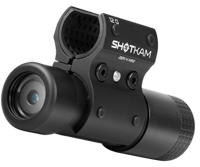Master Sporting Clays: Precyzyjne trafianie w loopery w Europie
Loopery to wyjątkowe wyzwanie na torze strzeleckim. Ich nieprzewidywalna trajektoria lotu często sprawia, że strzelcy zaczynają wątpić w swoją technikę. W tym odcinku Master Sporting Clays, Jonny Carter z TGS Outdoors współpracuje z trenerem Joshem Brownem, aby przeanalizować prostą, ale skuteczną metodę opanowania looperów. Obejrzyj poniższe wideo i kliknij przycisk 'CC', aby włączyć napisy w różnych językach.
Zrozumienie looperów
Loopery dodają dodatkową warstwę złożoności do strzelań sportowych dzięki swojej łukowej trajektorii. W przeciwieństwie do standardowych celów przechodzących, loopery wymagają od strzelców uwzględnienia zarówno ruchu poziomego, jak i pionowego. Josh podkreśla, że warto uprościć podejście: nie należy zbytnio analizować łuku lotu celu, ale traktować go jak cel przechodzący.
Wielu strzelców wpada w pułapkę śledzenia całego łuku lotu, co komplikuje wyczucie czasu i pozycjonowanie. Zamiast tego Josh zaleca skupienie się na ostatniej jednej trzeciej trajektorii lotu – na punkcie, w którym cel zaczyna się obracać.

Pozycja broni i wyczucie czasu
Konsekwencja w pozycji broni i wyczuciu czasu jest kluczowa dla skutecznego trafiania w loopery. Josh zaleca pozwolić, by glina „wyprzedziła” lufę. Rozpocznij z lufą lekko za celem, wyrównaj ją z dolną krawędzią gliny i przyspieszaj przez linię lotu.
Porada eksperta: Strzelaj w momencie, gdy glina zaczyna się obracać. Zaufaj swoim oczom, aby ocenić wyprzedzenie i unikaj prób precyzyjnego mierzenia odległości.
Ustawienie stóp i wyrównanie ciała
Prawidłowe ustawienie stóp i wyrównanie ciała są kluczowe do skutecznego śledzenia ruchu loopera. Ustaw stopy w kierunku punktu trafienia i utrzymuj ramiona równolegle do trajektorii celu.
Porada eksperta: Ustaw korpus w stronę punktu trafienia, aby utrzymać kontrolę i precyzję strzału.
Korzystanie z ShotKam do analizy w czasie rzeczywistym
Strzelanie do looperów wymaga zaufania do własnych umiejętności, ale narzędzia takie jak ShotKam pomagają zrozumieć błędy. Analizując nagrania, strzelcy mogą zidentyfikować subtelne błędy w czasie reakcji lub wyrównaniu.

Wniosek: Uprość swoją technikę
Loopery sprawdzają umiejętność strzelców w zakresie zaufania do instynktu i kontroli nad strzałem. Podejście Josha – skupienie się na ostatniej trzeciej trajektorii, właściwe ustawienie ciała i pewność ruchu – to skuteczna strategia radzenia sobie z tymi trudnymi celami.
Ćwicz te techniki, analizuj nagrania z ShotKam i przekonaj się, jak niewielkie poprawki mogą znacząco wpłynąć na twoją skuteczność.
Przegapiłeś nasz wpis na temat celów przechodzących? Sprawdź go tutaj.
Aktualnie czytasz:











